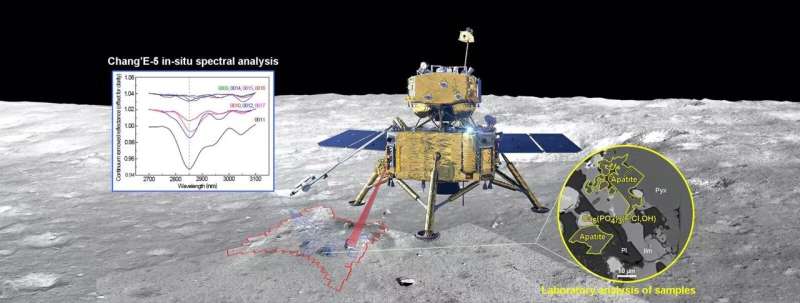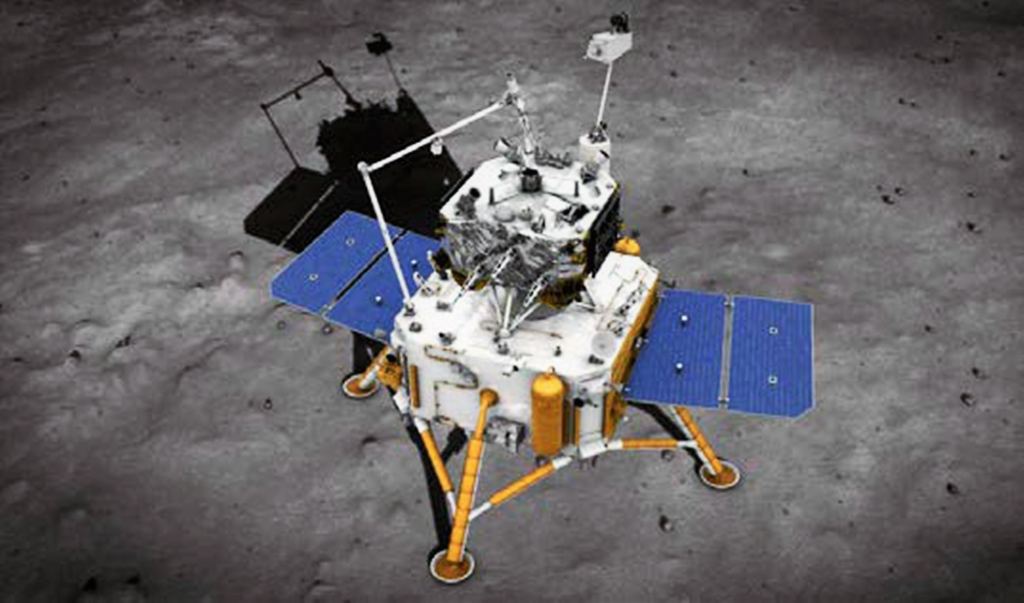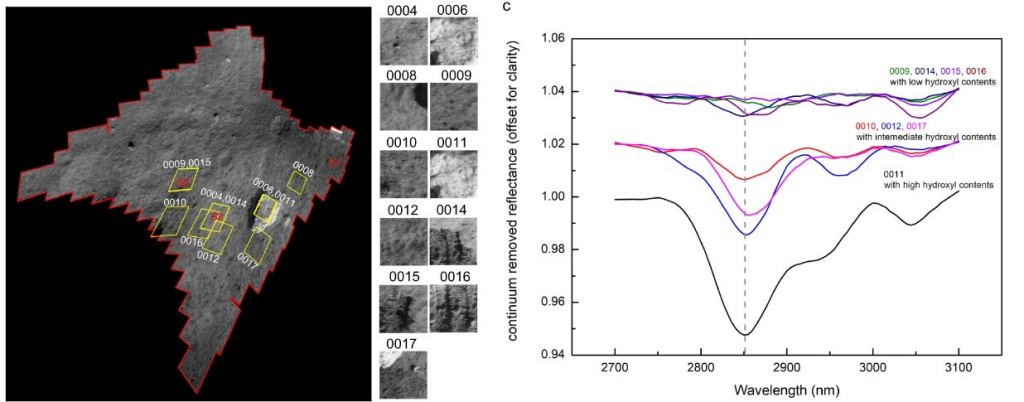Earlier this year, scientists from China's Chang'E-5 lunar lander revealed they had found evidence of water in the form of hydroxyl from in-situ measurements taken while lander was on the Moon. Now, they have confirmed the finding with laboratory analysis of the lunar samples from Chang'E-5 that were returned to Earth. The amount of water detected varied across the randomly chosen samples taken from around the base of the lander, from 0 to 180 parts per million (ppm), mean value of 28.5?ppm, which is on the weak end of lunar hydration.
"For the first time in the world, the results of laboratory analysis of lunar return samples and spectral data from in-situ lunar surface surveys were used jointly to examine the presence, form and amount of 'water' in lunar samples," said co-author Li Chunlai from the National Astronomical Observatories of the Chinese Academy of Sciences (NAOC), in a press release. "The results accurately answer the question of the distribution characteristics and source of water in the Chang'E-5 landing zone and provide a ground truth for the interpretation and estimation of water signals in remote sensing survey data."
The researchers, who published a paper in Nature Communications, said the laboratory analysis of the also provide critical clues to the possible sources of these hydroxyl. Hydroxyl is a close chemical cousin of water (H2O). Hydroxyl is HO, with one atom of oxygen and one of hydrogen.
Chang'e-5 landed on the near side of the Moon in December of 2022, setting down in Oceanus Procellarum, or Ocean of Storms, which is located on the western, central part of the Moon, as seen from our vantage point on Earth. It landed in an area not visited by the NASA Apollo or the Soviet Luna missions over 50 years ago. This area is also one of the youngest lunar surfaces, with an age of about 2 billion years old, and therefore these samples are different than those returned in the 1960s and 70s.
While on the surface, Chang'e-5 used data from a panoramic camera, lunar mineralogical spectrometer (LMS) and lunar penetrating radar to look for evidence of water molecules. There, the instruments registered about 120 ppm of water molecules, and curiously, one rock near the landing site registered the most hydroxyl, about 180 ppm.
The researchers said the lunar return samples were collected during the hottest part of daytime on the Moon, when temperatures were nearing 90 degrees C (200 degrees F), and so the surface would be at its driest.
As to the question of the hydroxyl's origins, numerous spacecraft and studies have indicated that a process called solar wind implantation can bring water to the lunar surface. Charged particles from the Sun drive hydrogen atoms to the lunar surface where they later bonded with oxygen to form water and hydroxyl. That process creates water molecules that exist diffusely in low concentrations across the Moon as hydroxyl or water molecules.
The timing of when Chang'E-5's samples were collected also coincides with low solar winds, which would mean less solar wind implantation. Additionally, the samples contain small amounts of agglutinate or clumps of lunar glass, which is created by solar winds interacting with the lunar surface. The researchers say this suggests "a weak contribution of solar wind implantation."
But the signal of hydroxyl persisting in the Chang'E-5 sample shows that perhaps "indigenous" hydroxyl, inside the rocks and regolith. The Chang'E-5 samples contained apatite, a crystalline, phosphate-rich mineral found on the Moon, as well as Earth. The researchers concluded that the 0 to 180?ppm "shows compelling evidence" that the hydroxyl is embedded within the rocks and regolith.
"This excess hydroxyl is indigenous, demonstrating the presence of lunar-originated internal water in the Chang'E-5 lunar samples, and that water played an important role in the formation and crystallization of the late lunar basaltic magma," LI said in the press release from the Chinese Academy of Sciences. "By investigating lunar water and its source, we are learning more about the formation and evolution of not just the Moon itself, but also the solar system. In addition, lunar water is expected to provide support for future human lunar in-situ resources."
China hopes for subsequent lunar explorations with Chang'E-5's successors, Chang'E-6 and Chang'E-7. According to Li, they want to continue researching lunar water via remote sensing, on-site detection and laboratory analysis to better understand the source, distribution and temporal variation of lunar water, including polar ice.
Sources:
Nature Communications
PhysOrg
 Universe Today
Universe Today


